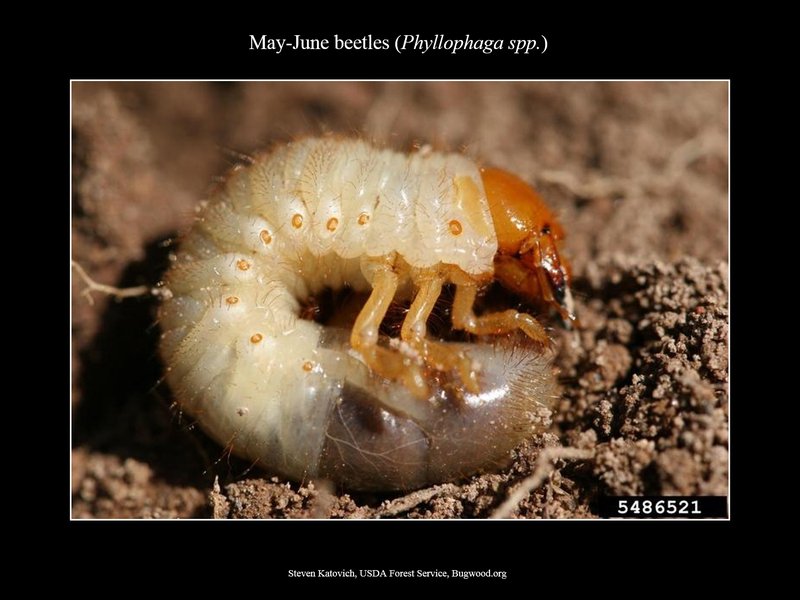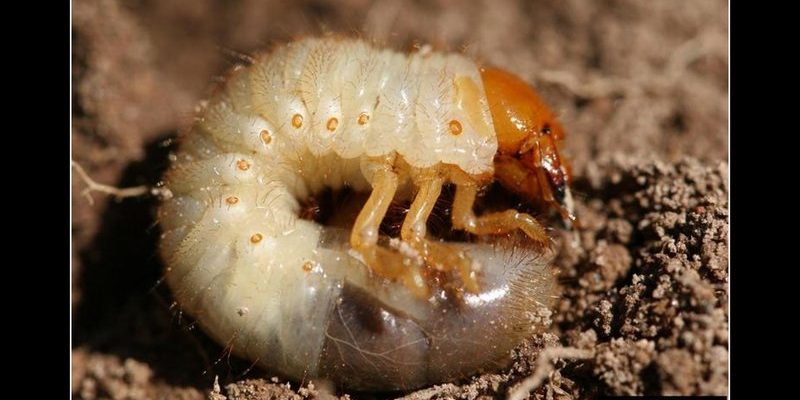
Grub worms may be small, but their impact can be huge. As they munch away on those vital roots, they can turn a lush, green lawn into a patchy, wilting mess. But don’t worry, we’ll walk through exactly what happens when these pests invade and how you can protect your grass. Plus, we’ll touch on how to identify grub worm damage and the steps you can take to prevent or mitigate their effects.
What Are Grub Worms?
Grub worms are essentially the immature stage of beetles, with Japanese beetles being one of the most notorious culprits. As larvae, they’re small, white, and C-shaped, often hiding just below the soil surface. You might not see them unless you dig in, but they’re up to no good when you’re not looking.
These pests feed on the roots of your turfgrass, which are crucial for delivering water and nutrients. Just like how a city needs its roads to function, your lawn relies on a healthy root system to stay vibrant. If grub worms are gnawing away at these roots, it can lead to all kinds of problems, from discoloration to areas that feel spongy when you step on them.
If you’ve noticed that your grass is turning brown or patchy, it could be a sign of grub worm infestation. But don’t rush to conclusions just yet! There are other factors at play, so let’s explore the symptoms of grub worm damage.
Symptoms of Grub Worm Damage
Recognizing the signs of grub worm damage is key to addressing the issue effectively. Here are some common symptoms to look for:
- Brown patches: One of the first signs you might notice is irregular brown patches in your lawn. These areas often have weak roots due to grub damage.
- Spongy feel: If your lawn feels spongy or mushy when walking on it, this could indicate that the roots have been severely affected.
- Increased animal activity: Animals like birds, raccoons, and skunks love to dig up grubs. If you see more wildlife in your yard, it might be because they’re on a grub hunt.
When these symptoms start popping up, it’s time to take a closer look. You can do a simple test by lifting a section of sod. If it easily comes up, you might have a grub problem beneath the surface.
But before you panic, let’s dig into how grub worms actually damage turfgrass root systems.
How Grub Worms Damage Turfgrass Roots
Grub worms damage turfgrass roots primarily through their feeding habits. As they munch on roots, they disrupt the plant’s ability to absorb water and nutrients, which can lead to stress and decline. Here’s a deeper look at the mechanics of this damage:
When grub worms are present in large numbers, their feeding can **severely weaken the root system**. It’s like trying to run a city without proper roads—everything just falls apart. The grass becomes unable to support itself, leading to wilting, discoloration, and ultimately, death if left unchecked.
In addition to weakening roots, grub worms can also attract other pests. As these critters feast, they create an opening for diseases and secondary pests to invade. It’s a vicious cycle that can spiral out of control quickly.
But how do you know when it’s time to act? Let’s go into preventative measures next.
Preventing Grub Worm Infestations
Prevention is always better than cure, right? When it comes to grub worms, there are several steps you can take to keep your lawn healthy and secure:
- Regular lawn maintenance: Keep your grass healthy by watering, fertilizing, and mowing properly. A robust lawn is less likely to succumb to grub invasions.
- Soil aeration: Aerating your lawn promotes better root growth and can help keep grub populations in check.
- Beneficial nematodes: These microscopic worms are natural predators to grub worms. Introducing them to your lawn can help regulate grub populations.
By taking these preventative measures, you’re essentially fortifying your lawn’s defenses. A strong root system will give your turfgrass the resilience it needs to withstand grub worm attacks.
Managing Existing Grub Worm Problems
If you find yourself facing an existing grub worm issue, don’t lose hope! There are effective management strategies to minimize their impact:
- Insecticides: Using targeted insecticides can help control grub populations. Make sure to choose one that’s safe for turfgrass and apply it according to the instructions.
- Manual removal: For small infestations, you can hand-pick grubs from the soil. It’s a bit tedious, but it can be effective!
- Water management: Grubs thrive in moist soil. Adjust your watering schedule to keep the soil slightly drier, which can deter them.
By staying proactive and vigilant, you can manage grub worm problems effectively. Just remember, addressing an infestation early makes all the difference in the health of your lawn.
Understanding the Life Cycle of Grub Worms
To truly tackle grub worms, it helps to know their life cycle. Grub worms typically hatch from eggs laid by adult beetles in late spring or early summer. Here’s how it goes down:
- Egg Stage: Adult beetles lay eggs in your lawn. This is the beginning of the trouble.
- Larval Stage: The eggs hatch into larvae (grub worms) and begin feeding on the roots.
- Pupal Stage: Grubs then pupate, eventually emerging as adult beetles, ready to lay more eggs and continue the cycle.
Understanding this life cycle gives you insight into when to act. Timing your interventions according to their life cycle can be more effective in managing these pests.
Grub worms may seem small, but their impact on turfgrass root systems can be significant. From turning your lush green lawn into a patchy mess to inviting other pests, these critters can create quite a headache. The key is to stay informed and proactive. By understanding how grub worms affect your lawn, recognizing the symptoms, and implementing preventative measures, you can maintain a healthy and vibrant outdoor space.
So the next time you head outside, take a moment to appreciate what’s beneath the surface. A healthy root system is the foundation of a thriving lawn, and with the right care, you can keep those pesky grub worms in check!

